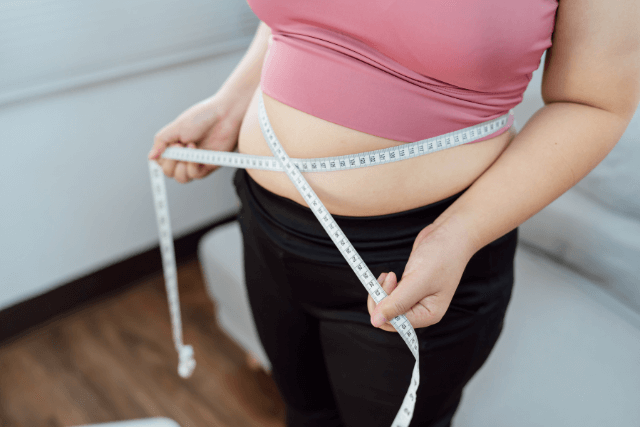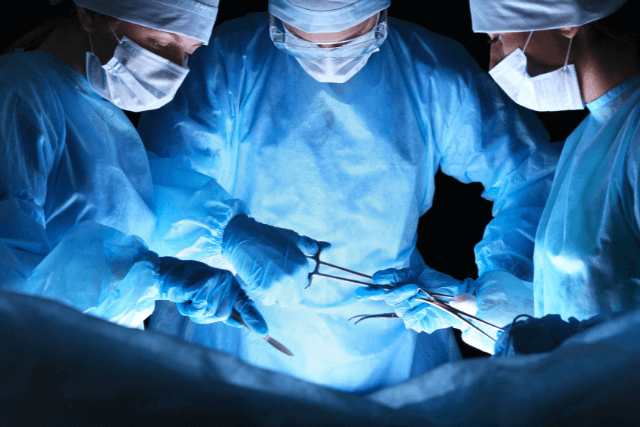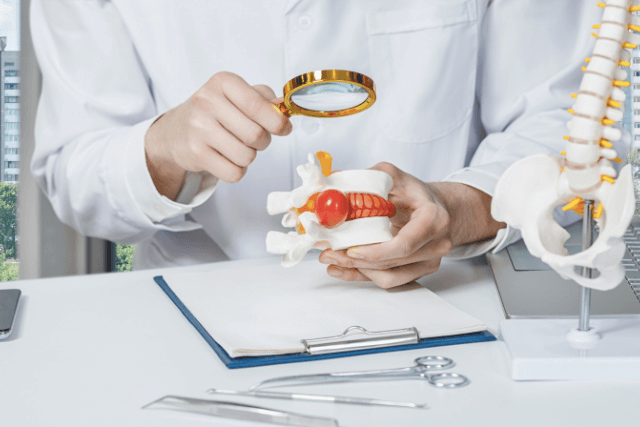Understanding Inguinal Hernia
An inguinal hernia occurs when tissue, usually part of the intestine, pushes through a weak spot in the lower abdominal wall. This area is often near the inguinal canal in the groin. It is one of the most common types of hernias, especially in men.
While some hernias may not cause pain or noticeable symptoms, others can cause discomfort and lead to complications. This guide will help you understand what causes an inguinal hernia, how to recognize the symptoms, and the best ways to treat and manage the condition.
What Causes Inguinal Hernia
An inguinal hernia forms when a weakness in the abdominal wall allows tissue to bulge through. Several factors can contribute to this weakness and increase the risk of hernia development. Here are the most common causes:
1. Congenital Weakness
Some people are born with a weakness in the abdominal muscles. This congenital condition makes it easier for tissue to push through the muscle wall. In many cases, this is discovered in infancy or childhood, but it may go unnoticed until adulthood.
2. Heavy Lifting and Strain
Frequently lifting heavy objects can increase pressure inside the abdomen. This pressure may push the intestine through the weak muscle area, creating a visible bulge in the groin.
3. Chronic Cough or Sneezing
Conditions that cause constant coughing or sneezing put repeated strain on the abdominal wall. Over time, this pressure can lead to an inguinal hernia, especially in people who already have weak muscles.
4. Straining During Bowel Movements
Chronic constipation and straining during bowel movements are also common causes. The added pressure from trying to pass hard stool can trigger a hernia.
5. Obesity and Weight Gain
Excess weight increases abdominal pressure and puts strain on the muscle walls. People with higher body weight are more likely to develop hernias, especially if they are also physically inactive.
6. Previous Surgery
Sometimes, past surgical procedures in the abdominal area can weaken the muscle wall and increase the risk of hernias forming near the scar tissue.
Recognizing Inguinal Hernia Symptoms
It’s important to notice the early signs of an inguinal hernia. In many cases, symptoms develop gradually. Early detection can lead to quicker treatment and help prevent complications.
1. Groin Bulge
The most common symptom is a bulge in the groin area. This bulge may become more noticeable when you stand, cough, or strain. It might disappear when you lie down.
2. Pain or Discomfort
People often feel pain or pressure at the hernia site, especially during physical activity or when bending over. The discomfort can vary in intensity and may feel sharp or dull.
3. Heaviness or Dragging Sensation
Some people describe a feeling of heaviness or a dragging sensation in the groin. This often increases after standing for long periods.
4. Burning or Aching
A burning feeling or dull ache in the affected area can also be a symptom. This pain usually worsens with activity and improves with rest.
5. Weakness or Pressure
A sense of weakness or pressure in the lower abdomen may occur, even if the bulge isn’t visible yet. This is often an early warning sign.
When to See a Doctor
It’s important to seek medical care if you notice any of the symptoms mentioned. Ignoring a hernia can lead to complications. Watch for the following serious signs:
- Sudden, severe pain in the groin
- Nausea or vomiting with the bulge
- A bulge that becomes firm and cannot be pushed back in
- Redness or discoloration at the hernia site
These signs may indicate a strangulated hernia, a serious emergency where blood flow to the tissue is cut off. Immediate surgery is required to prevent damage.
Types of Inguinal Hernias
There are two main types of inguinal hernias: indirect and direct. Knowing the difference helps in diagnosis and treatment planning.
Indirect Inguinal Hernia
This type is more common and often results from a congenital defect. Consequently, it follows the pathway of the inguinal canal and is more common in younger people. In some cases, it may descend into the scrotum in males.
Direct Inguinal Hernia
A direct hernia usually develops in adults due to muscle weakness over time. It forms near the inguinal canal opening but does not pass through the canal itself.
Both types can occur on one or both sides of the groin.
Diagnosis of Inguinal Hernia
Diagnosing an inguinal hernia typically starts with a physical exam. Your doctor will look for a bulge in your groin while you stand and may ask you to cough to make the hernia more noticeable.
If the diagnosis is unclear, imaging tests like an ultrasound, CT scan, or MRI may be ordered. These tests help confirm the presence and location of the hernia and rule out other possible causes of symptoms.
Diagnosis of Inguinal Hernia
Diagnosing an inguinal hernia typically starts with a physical exam. Your doctor will look for a bulge in your groin while you stand and may ask you to cough to make the hernia more noticeable.
If the diagnosis is unclear, imaging tests like an ultrasound, CT scan, or MRI may be ordered. These tests help confirm the presence and location of the hernia and rule out other possible causes of symptoms.
Best Treatment Options for Inguinal Hernia
Not all hernias need immediate surgery. The best treatment depends on the size of the hernia, the severity of symptoms, and your overall health. Let’s explore both non-surgical and surgical treatment options.
Watchful Waiting for Small Hernias
Non-surgical hernia care
If the hernia is small and not causing discomfort, your doctor may recommend watchful waiting. This means monitoring the hernia over time and checking for changes in symptoms. Lifestyle changes may also help prevent worsening.
Lifestyle Changes to Prevent Worsening
Hernia prevention tips
- Avoid heavy lifting
- Maintain a healthy weight
- Treat chronic cough or constipation
- Stop smoking to improve tissue health
- Practice safe lifting techniques
These steps won’t cure the hernia, but they can reduce symptoms and slow progression.
Hernia Support Garments
Non-surgical support methods
For people who are not candidates for surgery, support garments like trusses or binders may help. These devices provide external pressure to keep the hernia in place. However, they are not a long-term solution and should only be used under a doctor’s guidance.
Surgical Repair Options
Inguinal hernia surgery
Generally, surgery is the most effective way to treat inguinal hernias. Typically, it is usually recommended for hernias that are painful, growing, or at risk of complications. In fact, there are two main types of surgery.
Open Hernia Repair (Herniorrhaphy)
First, this traditional approach involves making a small incision in the groin, then pushing the tissue back into place, and finally reinforcing the wall with stitches or mesh. Consequently, recovery time is usually a few weeks.
Laparoscopic Hernia Repair
This minimally invasive method uses small incisions and a camera to repair the hernia with mesh. It often results in quicker recovery and less pain. However, it may not be suitable for all patients.
What to Expect After Hernia Surgery
Post-surgery recovery care
Recovery from hernia surgery depends on the type of procedure and your overall health. Most people can return to light activity within a week. Full recovery may take four to six weeks.
Common recovery tips include:
- Avoid heavy lifting during recovery
- Eat fiber-rich foods to prevent constipation
- Walk regularly to promote healing
- Follow up with your surgeon
Complications are rare but may include infection, bleeding, or recurrence of the hernia.
Long-Term Management and Outlook
Living with hernia repair
Living with hernia repair is often smooth when you follow the right post-surgery recovery care. Most people recover fully from inguinal hernia surgery and return to normal activities in a few weeks.
To prevent recurrence, focus on hernia prevention tips like maintaining a healthy weight, avoiding straining, and managing chronic cough or constipation. Therefore, these actions reduce abdominal pressure, support inguinal hernia repair, and protect the inguinal hernia surgery site.
Moreover, staying active supports healing, prevents recurring inguinal hernia symptoms, and helps with digestion. In addition, eat high-fiber foods, stay hydrated, and follow all post-surgery recovery care guidelines from your doctor.
Managing chronic health conditions that increase intra-abdominal pressure is key. Ongoing medical care reduces the risk of another inguinal hernia and improves long-term recovery outcomes.
Inguinal Hernia in Children
Pediatric hernia symptoms
Inguinal hernias can also affect children, especially boys. They may appear as a bulge in the groin or scrotum and often require surgery. Pediatric surgery is typically safe and effective with quick recovery times.
Parents should watch for:
- Groin bulges during crying or straining
- Fussiness or discomfort
- Visible swelling that comes and goes
Prompt medical attention is essential to avoid complications.
Inguinal Hernia and Pregnancy
Women and hernia risks
Though inguinal hernias are less common in women, pregnancy can increase the risk due to rising abdominal pressure. Pregnant women may experience groin pain, but actual hernias during pregnancy are rare.
Treatment usually involves observation until after childbirth, unless the hernia becomes complicated.
Preventing Inguinal Hernia
How to reduce your risk
Although not all hernias are preventable, some lifestyle habits can lower your risk. Prevention focuses on reducing abdominal pressure and keeping your core muscles strong.
Helpful habits include:
- Eating a high-fiber diet
- Staying active
- Using correct lifting techniques
- Avoiding smoking and chronic coughing
Regular medical checkups can also help detect early signs and prevent progression.
Final Thoughts on Inguinal Hernia
Inguinal hernia is a common and treatable condition that affects millions of people around the world. Thankfully, there are effective hernia treatment options that can help you live a healthy life without ongoing discomfort. Whether your symptoms are mild or severe, early diagnosis is key to successful outcomes.
By understanding the causes of inguinal hernia, you can make lifestyle changes that may reduce your risk. Following proper hernia prevention tips such as avoiding heavy lifting, managing chronic cough, and maintaining a healthy weight can go a long way.
If you do develop a hernia, know that both non-surgical hernia care and inguinal hernia surgery are safe and widely used methods, depending on your condition. Regular checkups and speaking openly with your doctor can ensure that the right path is taken based on your symptoms and lifestyle.
Additionally, post-operative care plays a vital role in full recovery. Adopting the recommended post-surgery recovery care tips like walking often, avoiding strain, and eating a high-fiber diet helps prevent complications and promotes healing.
In summary, inguinal hernia does not have to limit your life. With awareness, timely action, and the right treatment plan, most people recover quickly and return to normal activities. If you’re noticing signs of a hernia, don’t wait. Talk to your doctor and get expert advice on the best way forward.



